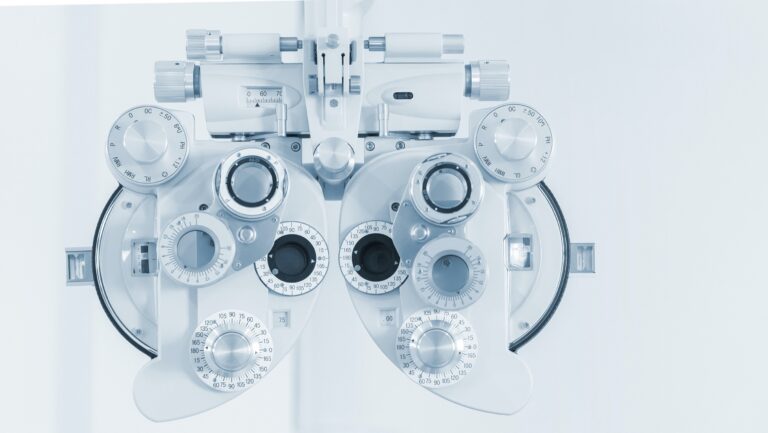
About Common Eye Infections
Generally, eye infections are contracted from friends or family who have an infection. Often, the infection is transferred from person to person when the unlucky recipient touches his or her eyes without sanitizing their hands. Caused for a variety of reasons, such as viruses, fungi, or bacteria, eye infections are highly contagious. Patients who develop eye infections often experience uncomfortable symptoms, like inflammation, stinging, and/or itchiness in their eyes. In rare cases, serious eye infections may also cause temporary vision loss.
Eye infections can cause a variety of painful symptoms that range from mild to severe. Additionally, the levels of potential harm can fall anywhere from innocuous to dangerous. Depending on the case, patients can resolve eye infections with over-the-counter remedies, and many heal without professional treatment. However, a few eye infections can become serious and require attention from an experienced ophthalmologist.
If you think that you or your child has contracted an eye infection, schedule a comprehensive eye exam at Ophthalmology Associates of the Valley in San Fernando Valley of Los Angeles, CA. All of our expert doctors have comprehensive training and are highly skilled at diagnosing and treating common and rare forms of eye infections for patients.
What Are Some Common Eye Infections?
These are a few of the frequently seen types of eye infections. It is a good idea for adults and teens to learn about them. If you think that you might have an eye infection, we recommend setting up an appointment at Ophthalmology Associates of the Valley right away. The key to healing an eye infection is early detection.
Blepharitis
Generally, this infection occurs after the age of 30, but it can affect people before then. Blepharitis is usually caused by bacteria, but it might also happen because of dry eye syndrome or fungal infection. The most common type of symptom is an eye discharge that forms a flaky film along the eyelids. Men and women who suffer from blepharitis often experience watery, itchy, or inflamed eyes.
Those with ocular rosacea, seborrheic dermatitis, or psoriasis have an elevated chance of getting this infection. Luckily, we have quite a few treatments available to resolve blepharitis.
Conjunctivitis
Commonly known as pink eye, conjunctivitis is possibly the most common type of eye infection. Conjunctivitis is nearly always caused by bacteria or a virus and is extremely contagious. The major symptoms of conjunctivitis include inflamed or itchy eyes with yellowish discharge. If conjunctivitis is caused by bacteria, we can use antibiotics to treat it.
Corneal Ulcers
Sometimes known as eye abscesses, corneal ulcers are unhealed sores of the cornea. Usually, the ulcers happen when bacteria or a foreign object (for example, lawn debris) irritates the cornea. We highly recommend scheduling an appointment to prevent corneal scarring, which might cause vision loss.
Styes and Chalazia
A lot of people confuse styes and chalazia because they both appear on the eyelids. Additionally, because they have similar symptoms, patients often mistake the two conditions. However, they are not the same thing. A stye is caused when bacteria become trapped in your eyelash follicles. Then, an irritating lump typically forms on/under the eyelid and sometimes on the lash line.
Styes are minor or large and can create different levels of pain, depending on their size and location. A chalazion, however, is a blocked or irritated eyelid oil duct, which means they generally do not happen on the lash line. Chalazia usually slowly increase in size but can ultimately become the size of a small pearl. Chalazia do not usually cause discomfort; however, if left untreated, they can impair vision.
Uveitis
Whenever a person has inflammation in the uvea (the central level of the eye wall), it is referred to as uveitis. Uveitis is frequently connected to autoimmune disease, but it can also happen because of bacteria, a virus, or a fungus. If not treated, it may destroy eye tissue and lead to visual impairment. Uveitis is quite easy to recognize by the excessive eye redness, light sensitivity, and eye pain. While it is highly important to treat the symptoms, it is also important to determine and treat its underlying cause.
What Are the Symptoms of An Eye Infection?
Despite the fact that eye infections are extremely common and easily treatable, even the most insignificant infection can create a lot of discomfort. People with eye infections may deal with symptoms that might appear mild or severe and may include irritated, stinging, teary eyes, inflamed eyelids, and greenish discharge. Some types of infections, such as chalazia, can cause a cyst on the eyelid. Even though vision loss is unusual with most types of eye infections, it can happen if you have a serious infection. If you have any lingering symptoms, we highly recommend scheduling an appointment with one of our expert ophthalmologists.
What Are the Causes of Common Eye Infections?
Nearly all routine eye infections are produced by a virus, a fungus, or bacteria. Typically, they spread by patients who become exposed to one of these infectious agents and then rub their eyes before remembering to wash their hands. Some people may get certain eye infections more frequently from using contact lenses. Therefore, we highly recommend that you completely wash your hands before putting in or taking out your lenses. Moreover, it is dangerous to share eye cosmetics. If you currently have an eye infection, patients should get rid of these items and not continue using them.
How Are Eye Infections Diagnosed?
Schedule a comprehensive eye evaluation at Ophthalmology Associates of the Valley as soon as you start to experience the symptoms of an eye infection. One of our expert doctors will talk to you about your case and perform a physical examination of your eye. In some cases, they might need to order special tests to help determine the type of infection you have developed, which could involve removing a small section of the affected area. Testing is extremely easy and doesn’t hurt because we completely numb the area with a local anesthetic. Establishing the type and cause of the infection is key to creating the best treatment plan and preventing future infections.
How Are Eye Infections Treated?
After performing a comprehensive eye assessment, we will discuss the most effective treatment plan to help you manage your eye infection. Your treatment method will vary according to the type of eye infection you have. For bacterial infections, we may prescribe a round of antibiotics.
If you have serious swelling, we may recommend eye drops or administer injections that contain cortisone or a steroid. For a stye or chalazion that won’t go away, laser treatment or minor surgical intervention is generally the best method.
Common Eye Infections FAQ
Relief For Eye Infections
Ranging from mild to severe, patients can find it difficult to determine what type of eye infection they have. If you do have an eye infection, or if you get a foreign object in your eye, we recommend seeing an eye doctor in Los Angeles, CA as soon as possible, especially if you experience discomfort or inflammation.
At Ophthalmology Associates of the Valley, our team is expertly trained and skilled in detecting, managing, and providing relief from eye infections.







